Using Reflex Integration Therapy to Treat ADHD
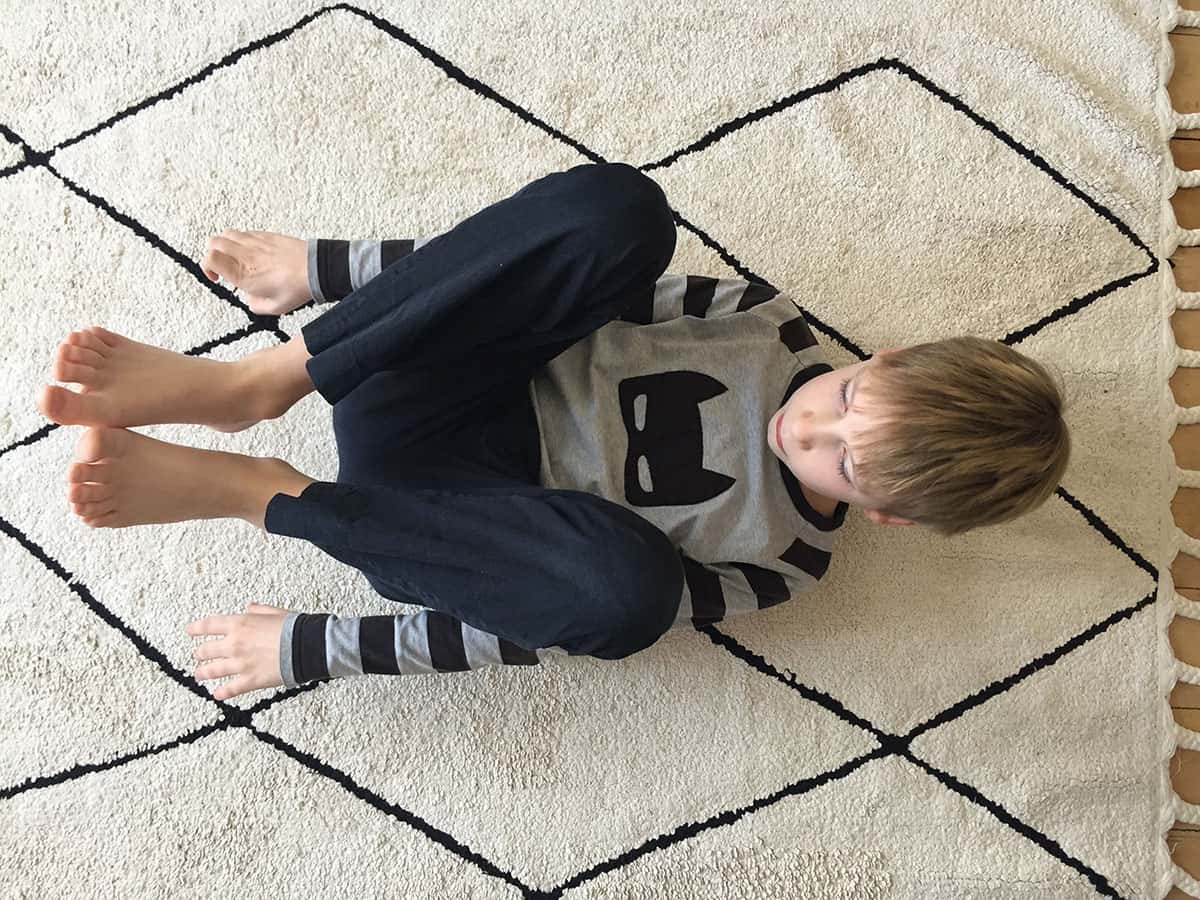
If you are familiar with our ADHD Story (Parts 1 and 2 ) you know that I have tried many things to treat my sons’ ADHD and found success with a variety of natural treatments.
Most recently, we have been having great success with using reflex integration therapy to treat ADHD.
You may have heard a bit about reflex integration therapy, seen it on Pinterest, or maybe this is the first time you have heard about it. Either way, I hope this post answers some of your questions and peeks your interest enough to see if it’s right for you and your family. (This post is lengthy, but I promise there is so much great info here!)
***Scroll down for an honest update on my two boys now 2 years later***
What is Reflex Integration Therapy?
I truly believe our teachers show up when we need them and that certainly is the case for me.
My therapist recommended I look into Sonia Story and the work she is doing with reflex integration therapy and rhythmic movements with kids diagnosed with ADHD and anxiety. I found her website uber helpful. I knew the investment of her more comprehensive course would be right for us.
Sonia is an excellent resource, for sure, and her classes are easily understood by all, but I was just overwhelmed with all the amazing information and not sure how to best help my kids. I wanted to find a practitioner in my area, but was hesitant, as we had already had a round of mediocre OT.
Finding a Reflex Integration Practitioner
With Sonia’s help, I consulted the RMTI practitioners list(more on that below) and found Thrive Therapy, a short 1/2 hour car ride away. At the time, I did not know how instrumental Elizabeth Hickman of Thrive Therapy would become in helping me learn more about both of my boys.
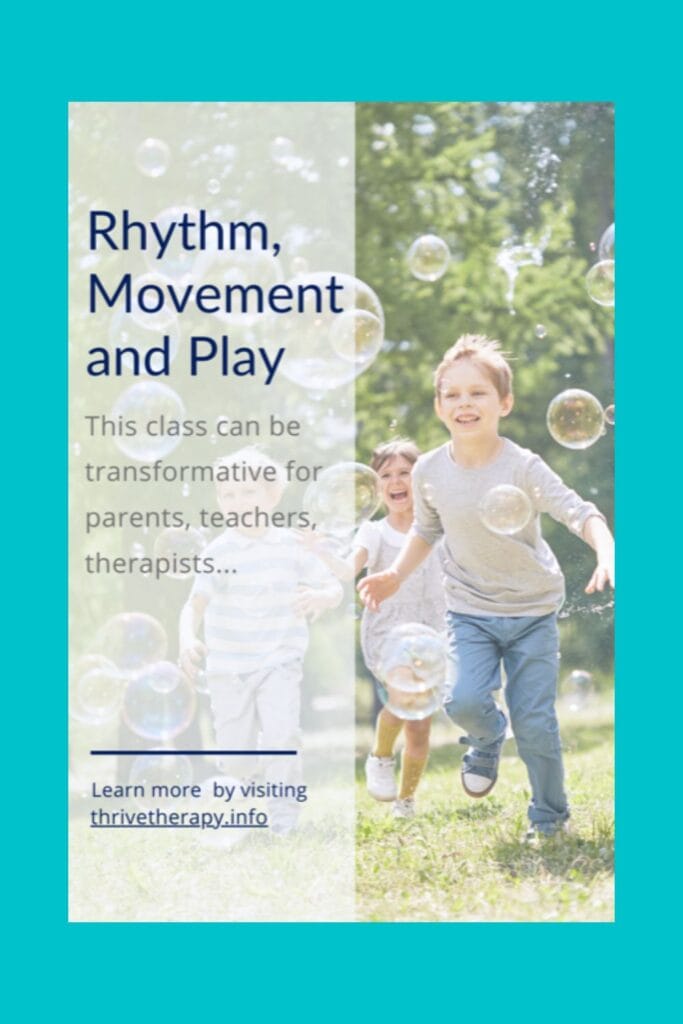
Elizabeth Hickman is a physical therapist, specially trained in rhythmic movements and reflex integration therapy. Her incredible body of knowledge and intuitive sense has been a blessing for our family. The work she is doing with my boys, to treat their symptoms of ADHD, has been transformational.
Related: Check out Elizabeth’s Website for her current offerings HERE.
These simple, repetitive movements breathed new life into our regime of natural treatments for ADHD and have given me such a better understanding not only of the underlying causes of my boys’ behavior, but has given us concrete ways to help them. (The photos are of my youngest during some of our home sessions.)
Because Elizabeth is much more qualified in this area than yours truly, I interviewed her with a few basic questions to give us a good understanding of reflex integration, rhythmic movements and how and why they help treat the symptoms of ADHD.
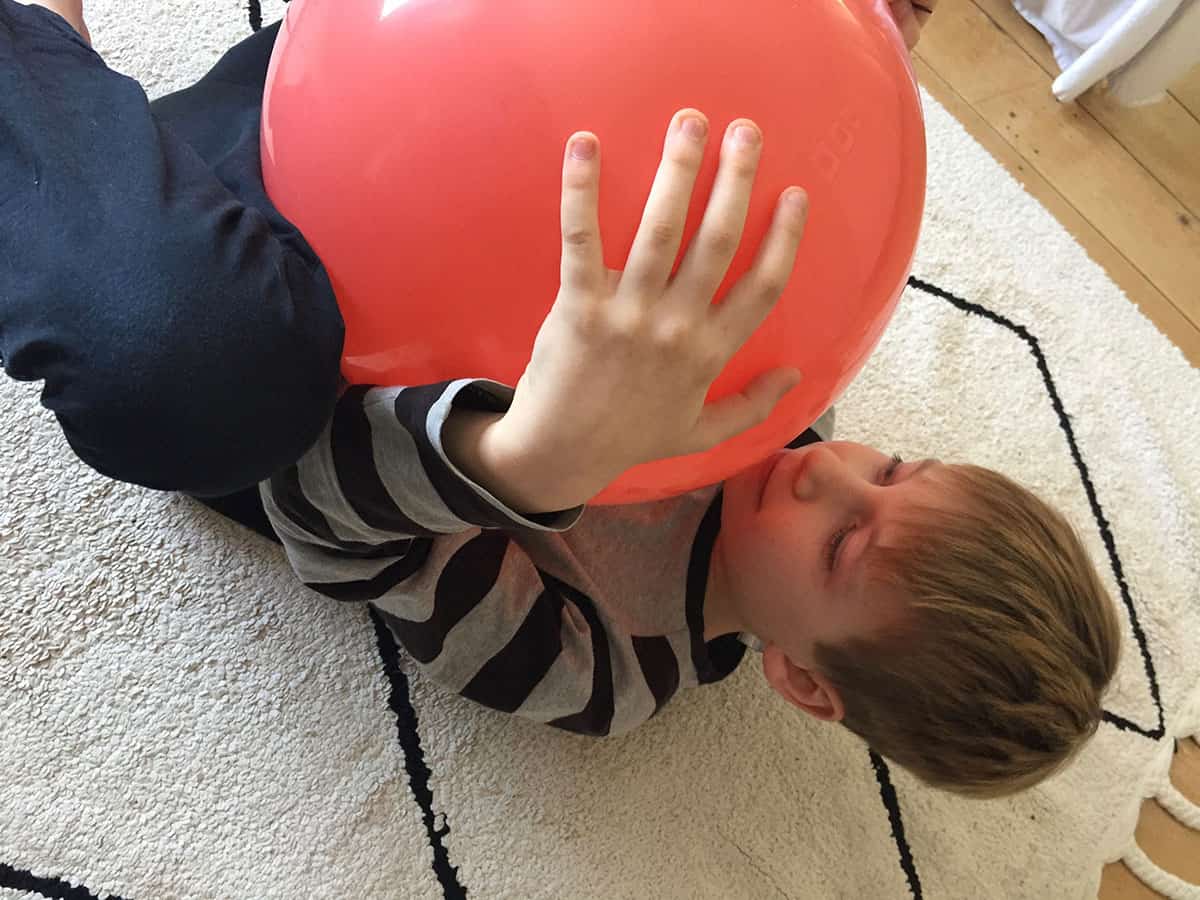
My interview with Reflex Integration Practitioner, Elizabeth Hickman
Elizabeth, I am so glad you can give us a bit of an explanation of reflex integration and maybe a little background to help us understand the process better. So what exactly is reflex integration?
Elizabeth: This is a great question, yet we need to back up the truck, and develop an understanding of what exactly are developmental reflexes before we can understand integration, and its foundational importance for the nervous system.
Developmental reflexes are pre-programmed movement patterns that are seated in the brain stem, which is the most primitive or least developed part of the brain. At birth, a newborn is born with all aspects of their brain, yet the only part of their brain which is fully functional is the brain stem. A newborn has no ability to get up, walk around, feed themselves…they are completely dependent on their caregiver. The developmental reflexes help the newborn to begin to move and interact with people and/or things within their environment.
Rooting is one of the easiest reflexes to give as an example; most adults have experienced a hungry newborn pecking, sucking on a shoulder, finger, blanket… in the attempt to satisfy their need for food. The Rooting Reflex is triggered when a newborn is hungry, and a brush of the cheek creates an automatic turn of their head with attempt to root. Of course, the appropriate thing to root to would be the mother’s breast to satisfy their needs, yet being that it is a reflex, there is no thinking or planning involved in the process. The action is a reflexive movement.
There are many reflexes that are our best friends within the first two years of life. They each have a purpose, need to be used in a particular way, and then further integrated or replaced by a neurological plan.
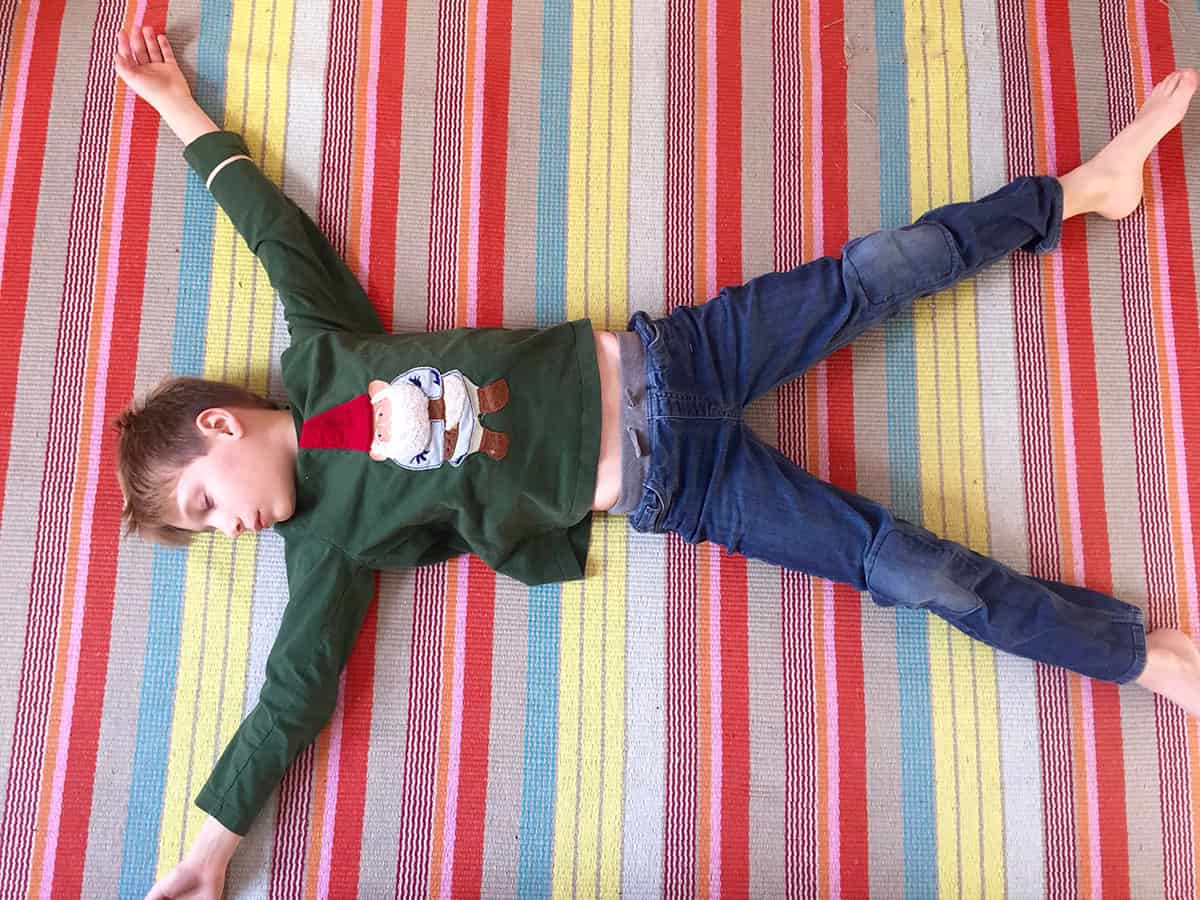
So our reflexes should be integrated – or gone – after the first few years of our lives. But often – for many reasons – in our modern culture of raising kids, reflexes are not integrated and cause problems as the child grows. With the help of a trained individual your kids can be tested to see if any reflexes are still present.
Elizabeth tested my kids and found they had many retained reflexes. Of course, this added to my guilt. What hadn’t I done? How had I missed getting them the proper movement? But I love Elizabeth’s comforting advice. “Feel guilty for 30 seconds and then move on.” We are all doing the best we can at any given time.
So, for my audience who is dealing with kiddos diagnosed with ADD/ADHD can we talk about this diagnosis more specifically? You have mentioned that ADHD is a label to describe immaturities in the brain. Can you explain that further?
Elizabeth: Through my experience, and within the framework of RMTi, ADHD is just a label or social construct that is used to describe an immature nervous system. More specifically, an individual who presents with signs or behaviors congruent with “ADHD” shows decreased neurological connections through the brain stem, cerebellum, basal ganglia and cortex.
Those behaviors associated with ADHD are actually very normal behaviors for a 2 or 3 year old. My mentor once said, “toddlers are the most dangerous individuals in the world; they have no impulse control, little understanding of consequence, little understanding of how to interact with others, they are constantly moving, exploring, challenging boundaries… they will pop you in the face if they don’t get their way without remorse…yet would we diagnose them with ADHD?”
This is actually a normal stage of development, one in which we are developing our sense of self, learning to interact with others, learning rules… For toddlers, the parts of the brain which haven’t developed strong connections are the same as those with the diagnosis of ADHD.
How is Rhythmic Movement Training (RMTi) used to integrate reflexes?
Elizabeth: RMTi is a reflex integration program which is based on the movements and activities that replicate our earliest movements. There are times when various reflexes have become “stuck” or haven’t completed their journey creating immature patterns to persist. RMTi is a way in which we can recreate and help give opportunity for neurological maturity by means of helping these reflexes to complete their journey, and integrate into more mature neurological patterns.
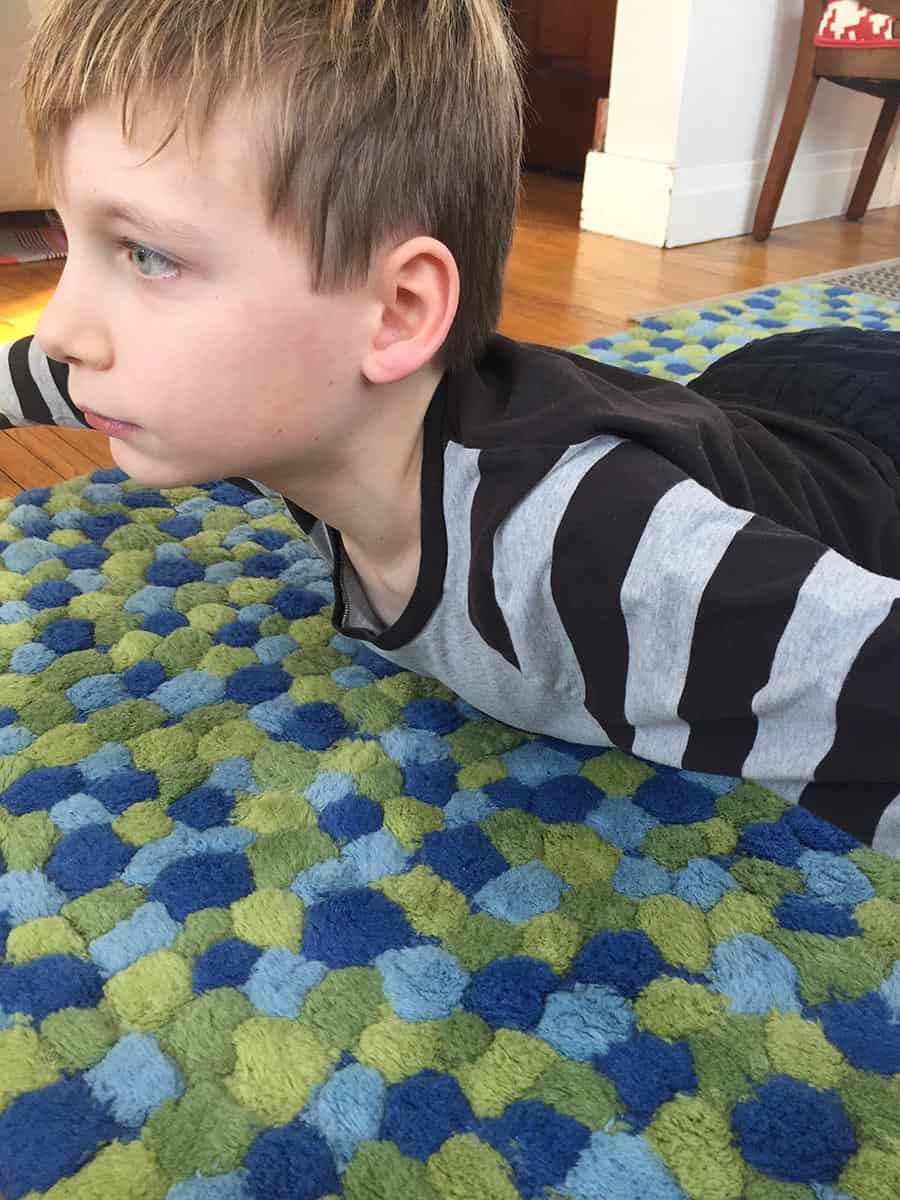
My boys see Elizabeth about every three to four weeks for an hour-long session. She has taught me the correct movements to do for my kids, which we do daily, to help integrate their reflexes and “grow their brain”. The additional knowledge I gained from Sonia’s online course gave me the confidence to supplement our work with Elizabeth and work on my kids for about 10 to 15 minutes every day.
What are some of the benefits to using RMTi?
Elizabeth: In general, the integration of reflexes underpin all aspects of an individual’s life: social and emotional health, speech and language development, focus and attention abilities, learning and memory capabilities and gross and fine motor skills.
The thing that I love the most about RMTi, is that it can be used in so many different populations, and it impacts so many different domains. As a physical therapist, I am always trying to “peel back the layers” and get to the root cause(s). When we look at one’s overall neurological maturity by means of reflexes, a lot can be explained and then further developed.
So how does RMTi help those that have “ADHD”?
Elizabeth: One huge component of RMTi is about developing smooth, rhythmical and coordinated patterns of movement. Developing the ability to modulate movements in this manner comes from laying down stronger connections between the cerebellum, basal ganglia and cortex; the very parts of the brain which show the most immaturity in toddlers and in those with diagnosed with ADHD.
Put very simply, the more organized we are within our movement patterns, the more organized and refined we are with our thinking, interactions, emotional regulation….
I can tell you for my own kids with ADHD, there have been many benefits – even some I wasn’t targeting right away.
For my older son, we began with the goal of controlling his emotions and feeling more comfortable with “the unknown”. He is now able to talk about his emotions so much more instead of just acting out immediately-his explosive behavior has decreased by 75%.
I also notice a big improvement on him speaking up for and noticing how he feels in his body, which is huge! He is also just physically stronger and more coordinated.
My younger son has gotten noticeably better with his ability to write and focus on his schoolwork. Every homework session used to start with crying or anger – now this happens only about 10% of the time!
His confidence in his school work is amazing to see, as well as his ability to sit and focus for longer periods of time. Physically, he is getting so much stronger and in turn, more confident in his body.
Elizabeth!! Thank you so much for sharing your amazing insights.
If this has peeked your interest, I highly recommend looking into rhythmic movement training and reflex integration. I can speak from experience that I am so grateful for the knowledge and know how, I have gained in this process and the amazing progress I have seen in my boys.
If you are in the Chicagoland Area, Elizabeth’s website will give you more information about her and RMTi in her area.
In addition to one-on-one sessions, she teaches a one day introductory course to RMTi called Rhythm, Movement and Play, and then RMTi Level 1 and Level 2 which focuses more specifically on reflexes. Please see her Events page for upcoming educational opportunities.
To find an RMTi practitioner in another area of the world, click HERE.
And again, I highly recommend the online course of Sonia Story. Her site is great for perusing – she has some great free content as well as her paid courses. I am so glad I invested in her more comprehensive course and it changed our lives!!!
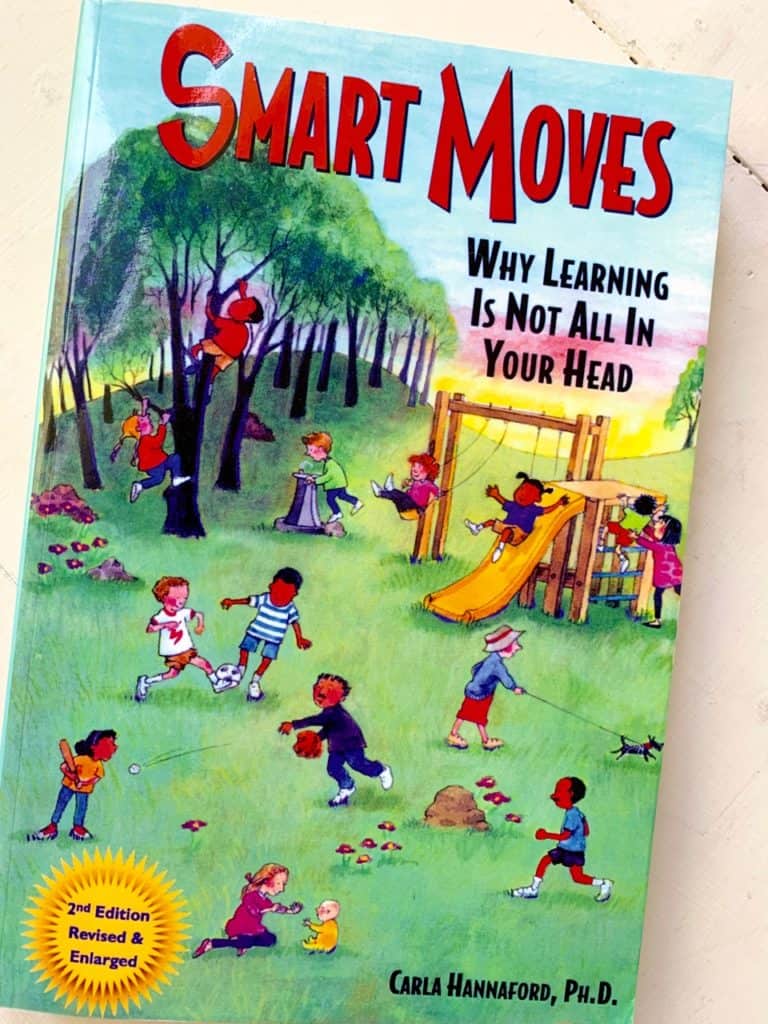
Must read books on this topic:
I have two great book recommendations if you’d like to learn more about reflex integration and just how important movement is for kids with attention and learning issues.
Smart Moves by Carla Hanford, is a very comprehensive book with tons of suggestions and loads of case studies proving how movement has been instrumental in healing kids with ADHD and all variables of learning disorders. Written for parents and caregivers, Carla gives practical exercises and research backed advice. This book will really change the way you think about ADHD.
Movements That Heal by Harald Dempsey and Moira Dempsey explores rhythmic movements as a drug free approach to ADHD and other learning, emotional or behavioral challenges. Like Smart Moves, this book offers a perspective on ADHD not normally heard in the US. Rather than treating the symptoms, this book looks to heal the root cause.
***Update on our progress 2 years later***
Both of my boys, now 12 and 14 are currently still seeing Elizabeth Hickman for therapy. My oldest, at his request, stopped going to therapy for about 9 months. We were going through a phase where he did not want to be “forced” into doing any more therapies. Can you relate?
I gave him the choice and we just kept up with my youngest, who has seen a lot of progress with his handwriting, self-expression, and overall maturity and confidence.
Update November 2020 – Now, we are returning to reflex integration with my 14 year old, too — the pandemic and remote learning has really caused a big regression. I plan to keep doing the movements for the foreseeable future. I really wish he hadn’t stopped, but at the time, I was following his wants.
This process takes time – some of my youngest’s reflexes had not even presented themselves yet, meaning we have had to work all the way through them. He went from having little feeling in his hands and feet and back to feeling emerging and having to deal with the uncomfortableness of that. We are still working through this and coming down the other side of the curve until the reflex is completely worked through.
This post contains some affiliate links. I only recommend products and services that I have paid for myself and have found to be incredibly helpful to me and my family.
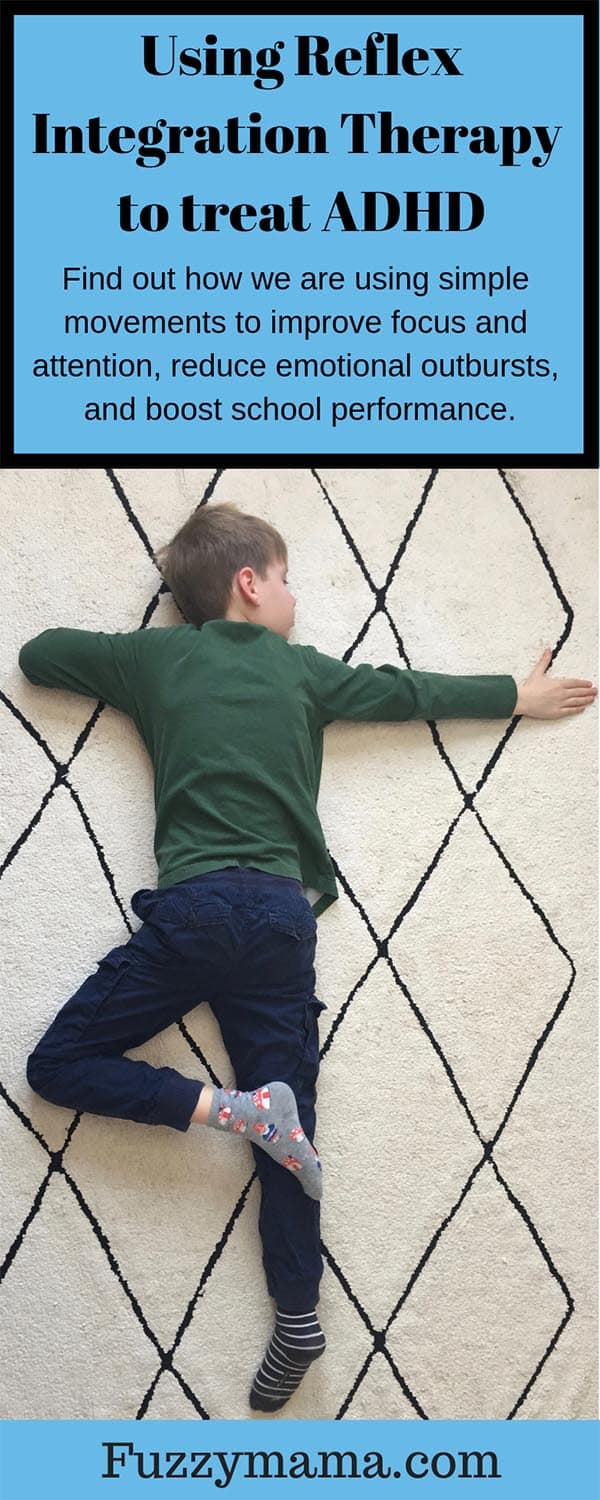
Need more help with ADHD?
Read about our BEST Breakfasts for ADHD – our most popular post to date!
Here’s how we monitor smart phones with our ADHD boys.
I think I’ve found the BEST SNACKS FOR ADHD.


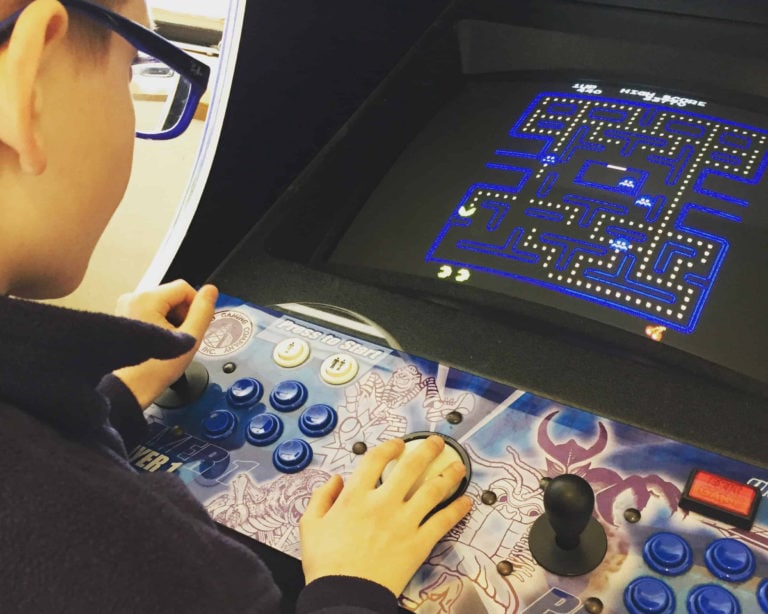
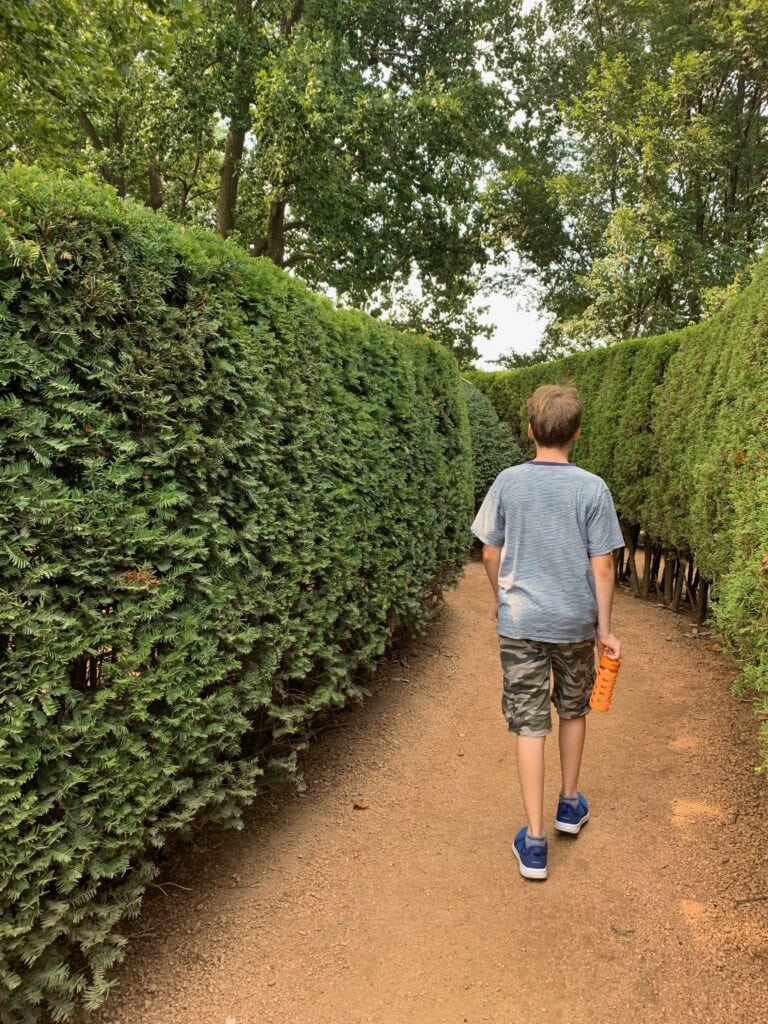
Thank you for this information. When our son was a 3-4 we were told he was hyper but at that time ( 37 years ago) we never heard of ADHD. I wish I had it would have helped him at school. All we knew was to keep him active to tier him out. From the age if 5 we had him in any sport there was. His son also has ADHD. But what she said about the mind not developing makes sense to me even AS an adult with ADD. I’m 65 and my family often tease me ( but I think they are more serious) and say things like Martha are you ever going to grow up. And I say No what fun would that be. But it’s not fun to live with ADD/ ADHD. BUT I am always up for a challenge and I will look into this therapy. If it works for kids why not for adults. You are doing an amazing job. May God continue to bless you as you are blessing others with your Blog.
Martha…you had the good sense to get him tons of exercise. That helps so much and something kids today just do not get. Of course this would be great for adults – in fact, I am going to get evaluated myself. I’ll let you know how it goes.
I would love to try this with my boys but we’re in England. My son who is 6 not yet diagnosed but shows all the signs and my 10 yr old who Is dyspraxic one symptom is lack of attention)
Hi Sarah! Thanks for writing! I reference Sonia Story in the article…she has an awesome online class that I took to help me do these movements at home with my kids. She has lots of free content on her site as well to see if you think it’s the right fit. Check her out here.
Hello,
There is an amazing woman called Caroline Winbourne who does this in Cheltenham. Neuro Re-start.
Thanks for the name…..for any UK readers. It is fabulous work, if you can find someone trained in it.
Thanks so much for the name. It’s amazing work, if you can find someone trained in it.
Please do. I was only diagnosed about 4-5 years ago. So much makes sense now. And i have a binder full of info on it. And books. Im the kind of person that when i get told i have something i will reseach it. Or my family members. Im into doing as much natural as possible.
Also get Checked for Celiac and your thyroi. They often go hand and hand. Especially gluten and ADHD. Are your boys on a strict diet. We had to put our son on one. No red food coloring, no sugar, no milk, and had i known about what gluten could do to him i would have taken him off that as well. Forgive me if im sticking my nose in where it doesn’t belong. Martha
Yes, my boys are gluten free, now trying dairy free, very low sugar and processed stuff, no dyes, etc. It definitely makes a big difference, but can be so hard. Kids at school all have junk and my kids feel left out – they are not at the age yet where they realize how much better they feel when eating well. But others around them notice a difference. You sound like me – a certifiable researcher! Keep it up! : )
How can a person make sure to nurture their children’s needs to help the likelihood of an immature brain stem be low? My daughter is so full of energy and try to keep her moving, but want to make sure I’m doing what I need to in order for her to delevop properly.
Hi Linde, I am not a therapist, but I will tell you what I’ve heard many professionals say to me: As a society, we are containing our children – in strollers, on iPads, car seats, etc. Movement and lots of it is the best thing to give kids. Sounds like you are doing a great job and are already educating yourself on these matters!
Very exciting to know about this therapy, but as it almost always happens, in my country El Salvador nobody knows or understands this subject, so I would like you to make a publication for moms that we do not have access to these programs with a small guide to provide these benefits to our children at home. Thank you for your help.
Thank you so much, for sending this inf, I’m a care giver of three children with atism/adhd they were abandoned by both parents. I will look into the therapy and hope that my state offers it. It is very hard, yet god gives me the strengh, god blessed you for taking the time to set this inf, out for others
What a gift YOU are for your children. They are so lucky to have you!
In the book ‘The disconnected kid’ you find a lot of information about children with adhd/autism/dyslexia and so on. It also gives a good programm to help your kid when professional help isn’t available in your surroundings.
It helped my child a lot.
Hi Martha! Thanks….I will have to check that book out!
There are OT’s who are trained in this technique and very successful. I am sorry you were stuck with a mediocre OT but I wanted to point out that there are also very skilled OT’s who deal with these same situations. Not every practitioner is great for every child. You have to find who works for you. Also, not every practitioner is as skilled and knowledgeable as the rest. I am happy you found someone to give your family hope.
Thanks for your comment. Yes, I am so glad to hear many OT’s are doing this work now. It’s wonderful and so needed.
Hi, my son has PDD NOS and I am doing the rhythmic exercises since last 6 months. He had severe sound sensitivity. He could not tolerate the sound of crackers. Here in India, we cannot stop crackers during the festival of Diwali. But this year he has learnt to tolerate the sound of crackers. This is a very important achievement. Thank you RMTi.
So glad to hear that!! Thanks for sharing your good news. My oldest stopped RMTi and we are starting again to help with his severe anxiety. My youngest never stopped and has made great gains in school work and writing! It is so powerful. Keep in touch to tell me more good news!
Did you seek out a physical or occupational therapist on your own or were you referred by a doctor? I would really like to have my two older boys evaluated, but our insurance requires referrals for everything. What were your concerns (besides having ADHD) that lead you down this path? Poor handwriting, poor coordination, etc? Thanks so much!
Hi Angie! We were not referred by a doctor, rather our therapist said she had heard some good things about it and luckily, we had someone within 30 miles of us! She evaluated both of my boys and found lots to work on. My oldest was having anger outbursts, my youngest trouble writing and bedwetting. REflex integration has been very useful for all of those! Insurance does not cover it for us, but we go once a month and I’m able to work on it with them, as well.
Are these helpful for adult adhd?
I don’t have diagnosed ADHD, but I have a reflex integration session now and again with my kids and I LOVE it. It relaxes me and makes me sleep like a baby!